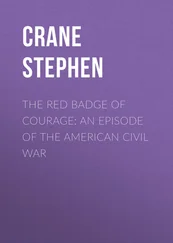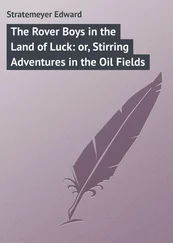Stephen Fry - The Ode Less Travelled - Unlocking The Poet Within
Здесь есть возможность читать онлайн «Stephen Fry - The Ode Less Travelled - Unlocking The Poet Within» весь текст электронной книги совершенно бесплатно (целиком полную версию без сокращений). В некоторых случаях можно слушать аудио, скачать через торрент в формате fb2 и присутствует краткое содержание. Жанр: Старинная литература, на английском языке. Описание произведения, (предисловие) а так же отзывы посетителей доступны на портале библиотеки ЛибКат.
- Название:The Ode Less Travelled: Unlocking The Poet Within
- Автор:
- Жанр:
- Год:неизвестен
- ISBN:нет данных
- Рейтинг книги:3 / 5. Голосов: 1
-
Избранное:Добавить в избранное
- Отзывы:
-
Ваша оценка:
- 60
- 1
- 2
- 3
- 4
- 5
The Ode Less Travelled: Unlocking The Poet Within: краткое содержание, описание и аннотация
Предлагаем к чтению аннотацию, описание, краткое содержание или предисловие (зависит от того, что написал сам автор книги «The Ode Less Travelled: Unlocking The Poet Within»). Если вы не нашли необходимую информацию о книге — напишите в комментариях, мы постараемся отыскать её.
The Ode Less Travelled: Unlocking The Poet Within — читать онлайн бесплатно полную книгу (весь текст) целиком
Ниже представлен текст книги, разбитый по страницам. Система сохранения места последней прочитанной страницы, позволяет с удобством читать онлайн бесплатно книгу «The Ode Less Travelled: Unlocking The Poet Within», без необходимости каждый раз заново искать на чём Вы остановились. Поставьте закладку, и сможете в любой момент перейти на страницу, на которой закончили чтение.
Интервал:
Закладка:
In order of ascending line length, the QUATRAIN comes next.
The Quatrain The QUATRAINis HEROICand profoundAnd glories in the deeds of noble days:Pentameters of grave and mighty sound,Like rolling cadences of brass, give praise.Alas! its ELEGIACcounterpartBemoans with baleful woe this world of strife:In graveyards and in tears it plies its artLamenting how devoid of hope is life.In equal form the COMIC QUATRAIN’s made,But free to say exactly what it thinks;It’s brave enough to call a spade a spadeAnd dig for truth however much it stinks.
There is, of course, no formal difference between those three samples, they are merely produced to show you that quatrains in abab have been used for all kinds of purposes in English poetry. Gray’s ‘Elegy Written in a Country Churchyard’ is probably the best-known elegiac use quatrains have been put to. Its lines have given the world classic book and film titles ( Far from the Madding Crowd and Paths of Glory ) as well as providing some memorably stirring phrases:Forbade to wade 4through slaughter to a throne,And shut the gates of mercy on mankind;
A cross-rhymed quatrain (perhaps obviously) allows for fuller development of an image or conceit than can be achieved with couplets:Full many a gem of purest ray serene The dark unfathomed caves of ocean bear ;Full many a flower is born to blush un seen ,And waste its sweetness on the desert air .
(Gray’s repetition of ‘Full many’ is an example of a rhetorical trope called anaphora , in case you are interested, in case you care, in case you didn’t already know, in case of too much anaphora, break glass. Actually, that was epanaphora .)
The Rubai
From Persia comes a quatrain form called the RUBAI (plural ruba’iat or ruba’iyat ), rhyming aaba, ccdc, eefe etc.In ancient Persia and Islamic lands,The price of heresy was both your hands:Indeed the cost could even be your head (Or burial up to it in the sands).The wiser heads would write a RUBAIdownAnd pass it quietly round from town to town,Anonymous, subversive and direct–The best examples garnered great renown.Collections of these odes, or RUBA’IYATShowed sultans where progressive thought was at;Distributed by dissidents and wits,Like early forms of Russian samizdat.The Ruba’iyat of Omar, called Khayyam,Are quatrains of expansive, boozy charm.As found in Horace, Herrick and Marvell,The message is: ‘Drink! When did wine do harm?Too soon the sun will set upon our tents,Don’t waste your time with pious, false lamentsDrink deep the wine of life, then drink some more’I never heard a poet make more sense.
The translation of the Ruba’iat of Omar Khayyam by Edward Fitzgerald ranks alongside Burton’s Arabian Nights as one of the great achievements of English orientalism:A Book of Verses underneath the Bough,A Jug of Wine, a Loaf of Bread,–and ThouBeside me singing in the Wilderness–Oh, Wilderness were Paradise enow!…’Tis all a Chequer-board of Nights and DaysWhere Destiny with Men for Pieces plays:Hither and thither moves, and mates, and slays,And one by one back in the Closet lays.The Ball no Question makes of Ayes and Noes,But Right or Left, as strikes the Player goes;And he that toss’d Thee down into the Field,He knows about it all–He knows–HE knows!The Moving Finger writes; and, having writ,Moves on: nor all thy Piety nor WitShall lure it back to cancel half a Line,Nor all thy Tears wash out a Word of it.
If that kind of poetry doesn’t make your bosom heave then I fear we shall never be friends. Open forms in sixain also exist in English verse. Wordsworth in his ‘Daffodils’ used the stanza form Shakespeare developed in ‘Venus and Adonis’, essentially a cross-rhymed quatrain closing with a couplet, abab cc :For oft when on my couch I lieIn vacant or in pensive mood,They flash upon that inward eyeWhich is the bliss of solitude,And then my heart with pleasure fills,And dances with the Daffodils.
Rhyme Royal R HYME R OYALhas a noble historyFrom Geoffrey Chaucer to the present dayIts secret is no hidden mystery:Iambic feet, the classic English wayWith b and b to follow a b a .This closing couplet, like a funeral hearse,Drives to its end the body of the verse.
RHYME ROYAL (or Rime Royal as it is sometimes rendered) is most associated with Geoffrey Chaucer, whose Troilus and Criseyde marks the form’s first appearance in English. It was once thought that the name derived from its later use by Henry IV, but this is now, like all pleasing stories (from King Alfred’s Cakes to Mr Gere’s way with gerbils), disputed by scholars. I suppose by rights a seven-line stanza should be called a heptain or septain, but I have never seen either word used. Auden used the ababbcc of rhyme royal in his ‘Letter to Lord Byron’. You would think that he would choose ottava rima , the form in which the addressee so conspicuously excelled. Auden apologises to his Lordship for not doing so:Ottava Rima would, I know, be properThe proper instrument on which to payMy compliments, but I should come a cropper;Rhyme-royal’s difficult enough to play.But if no classics as in Chaucer’s day,At least my modern pieces shall be cheeryLike English bishops on the Quantum Theory.
Auden’s reluctance to use ottava rima stemmed, one suspects, from its demand for an extra rhyme. I have always loved this form, however, as my sample verse makes clear.
Ottava Rima O TTAVA R IMAis a poet’s dream,The most congenial of forms by far.It’s quite my favourite prosodic schemeAnd Byron’s too, which lends it some éclat.Much more adaptable than it may seem,It plays both classical and rock guitar;It suits romantic lyric inspiration,But I prefer Byronic-style deflation.
As you can see, OTTAVA RIMA rhymes abababcc and thus presents in eight lines, hence the ottava, as in octave. It is in effect rhyme royal with an extra line, but just as one or more gene in the strand of life can make all the difference, so one or more line in a stanza can quite alter the identity of a form. The origins of ottava rima are to be found in Ariosto’s epic Orlando Furioso and it entered English in translations of this and other Italian epics. John Hookham Frere saw its potential for mock-heroic use and it was through his 1817 work Whistlecraft that Byron came to use the form, first in Beppo and then in his masterpiece of subverted epic and scattergun satire, Don Juan .
As Auden remarks, ‘Rhyme-royal’s difficult enough…’. Two pairs of three rhymes and a couplet per verse. Perverse indeed.
Some of W. B. Yeats’s best loved later poems take the form away from scabrous mock-heroics by mixing true rhyme with the sonorous twentieth-century possibilities opened up by the use of slant-rhyme, finding an unexpected lyricism. This is the celebrated last stanza of ‘Among School Children’:Labour is blossoming or dancing whereThe body is not bruised to pleasure soul,Nor beauty born out of its own despair,Nor blear-eyed wisdom out of midnight oil.O chestnut-tree, great-rooted blossomer,Are you the leaf, the blossom or the bole?O body swayed to music, O brightening glance,How can we know the dancer from the dance?
I trust you are still reading out loud …
Spenserian Stanza Nine lines of verse did E DMUND S PENSERtakeTo forge the style that bears his name divine,A form that weaves and wanders like a snakeWith art all supple, subtle, serpentine,Constructing verse of intricate designWhose coils, caressing with sublime conceit,Engirdle and embrace each separate line:But Spenser, with an extra final beat,Unsnakelike ends his verse on hexametric feet.
Читать дальшеИнтервал:
Закладка:
Похожие книги на «The Ode Less Travelled: Unlocking The Poet Within»
Представляем Вашему вниманию похожие книги на «The Ode Less Travelled: Unlocking The Poet Within» списком для выбора. Мы отобрали схожую по названию и смыслу литературу в надежде предоставить читателям больше вариантов отыскать новые, интересные, ещё непрочитанные произведения.
Обсуждение, отзывы о книге «The Ode Less Travelled: Unlocking The Poet Within» и просто собственные мнения читателей. Оставьте ваши комментарии, напишите, что Вы думаете о произведении, его смысле или главных героях. Укажите что конкретно понравилось, а что нет, и почему Вы так считаете.










